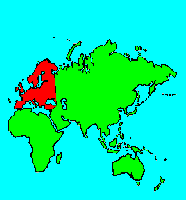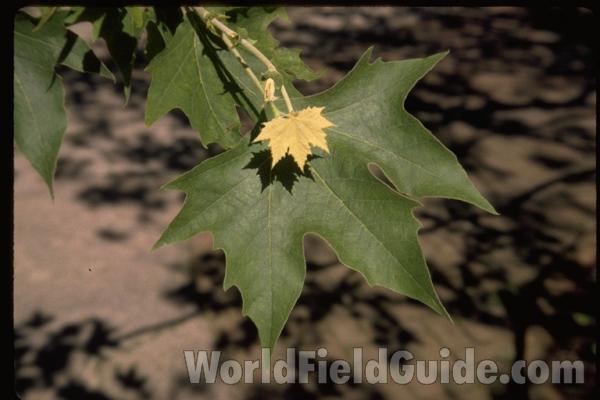SPECIES INFO
Oriental Plane Tree (Platanus orientalis) is found from southeastern Europe eastward to Asia Minor. This is a large tree that can be up to 90 feet tall.Sycamores (genus Platanus) comprise a total of six worldwide species of which three are native to North America. The leaves are palmately lobed. The Arizona, California, American, and oriental sycamore have leaves with five (frequently three) toothed pointed lobes that grow alternately along the stem. There are four species established in greater North America.
Plane tree or sycamore family (Plantanaceae) contains a single genus with perhaps eight different species found in the Northern Hemisphere. Four species are now established in greater North America including Platanus orientalis. Two Central American species are known. There are also species in south east Europe to Iran and Indo-China. In Platanus occidentalis, the leaves are heart shaped in outline with several large teeth and additional smaller teeth. In the North American species the leaves are either lobed or show large teeth. These lobes and large teeth have additional smaller teeth.
Rose Group (Order Rosales) contains many large and very important families. Included here are fruit trees in the family Rosaceae, the nitrogen fixing plants like clover and alfalfa (in the family Leguminosae), and a large assemblage of plants divided into over fifteen different families.
There has been considerable research in recent years as to the organization of the various plant families into orders. Although we certainly recognize and applaud those who are rearranging the families, we are staying with a more traditional approach for several reasons:
1) The traditional approach is well known, and still exists in many very popular field guides.
2) There are questions as to whether the new organizations are finalized.
3) We recognize there are essentially two different modern systems today: A European one and a North American one.
4) Furthermore, we recognize that most plant families and their boundaries are unchanged. In fact many excellent modern books present the families within the Monocots in a simple alphabetical sequence and the families within the Dicots in a simple alphabetical sequence.
Dicots (Dicotyledoneae Class) are the predominant group of vascular plants on earth. With the exception of the grasses (Monocots) and the Conifers (Gymnosperms), most of the larger plants that one encounters are Dicots. Dicots are characterized by having a seed with two outer shell coverings.
Some of the more primitive Dicots are the typical hardwood trees (oaks, birches, hickories, etc). The more advanced Dicots include many of the Composite (Aster) Family flowers like the Dandelion, Aster, Thistles, and Sunflowers. Although many Monocots reach a very high degree of specialization, most botanists feel that the Dicots represent the most advanced group of plants.
Seed plants (Phylum Embryophyta) are generally grouped into one large phylum containing three major classes: the Gymnosperms, the Monocots, and the Dicots. (Some scientists separate the Gymnosperms into a separate phylum and refer to the remaining plants as flowering plants or Angiospermae.)
For North American counts of the number of species in each genus and family, the primary reference has been John T. Kartesz, author of A Synonymized Checklist of the Vascular Flora of the United States, Canada, and Greenland (1994). The geographical scope of his lists include, as part of greater North America, Hawaii, Alaska, Greenland, Puerto Rico, and the Virgin Islands.
Kartesz lists 21,757 species of vascular plants comprising the ferns, gymnosperms and flowering plants as being found in greater North America (including Alaska, Hawaii, Greenland, Puerto Rico and the Virgin Islands.
There are estimates within the scientific world that about half of the listed North American seed plants were originally native with the balance being comprised of Eurasian and tropical plants that have become established.
Plant kingdom contains a large variety of different organisms including mosses, ferns, and seed plants. Most plants manufacture their energy from sunlight and water. Identification of many species is difficult in that most individual plants have characteristics that have variables based on soil moisture, soil chemistry, and sunlight.
Because of the difficulty in learning and identifying different plant groups, specialists have emerged that study only a limited group of plants. These specialists revise the taxonomy and give us detailed descriptions and ranges of the various species. Their results are published in technical journals and written with highly specialized words that apply to a specific group.
On the other hand, there are the nature publishers. These people and companies undertake the challenging task of trying to provide easy to use pictures and descriptions to identify those species.


